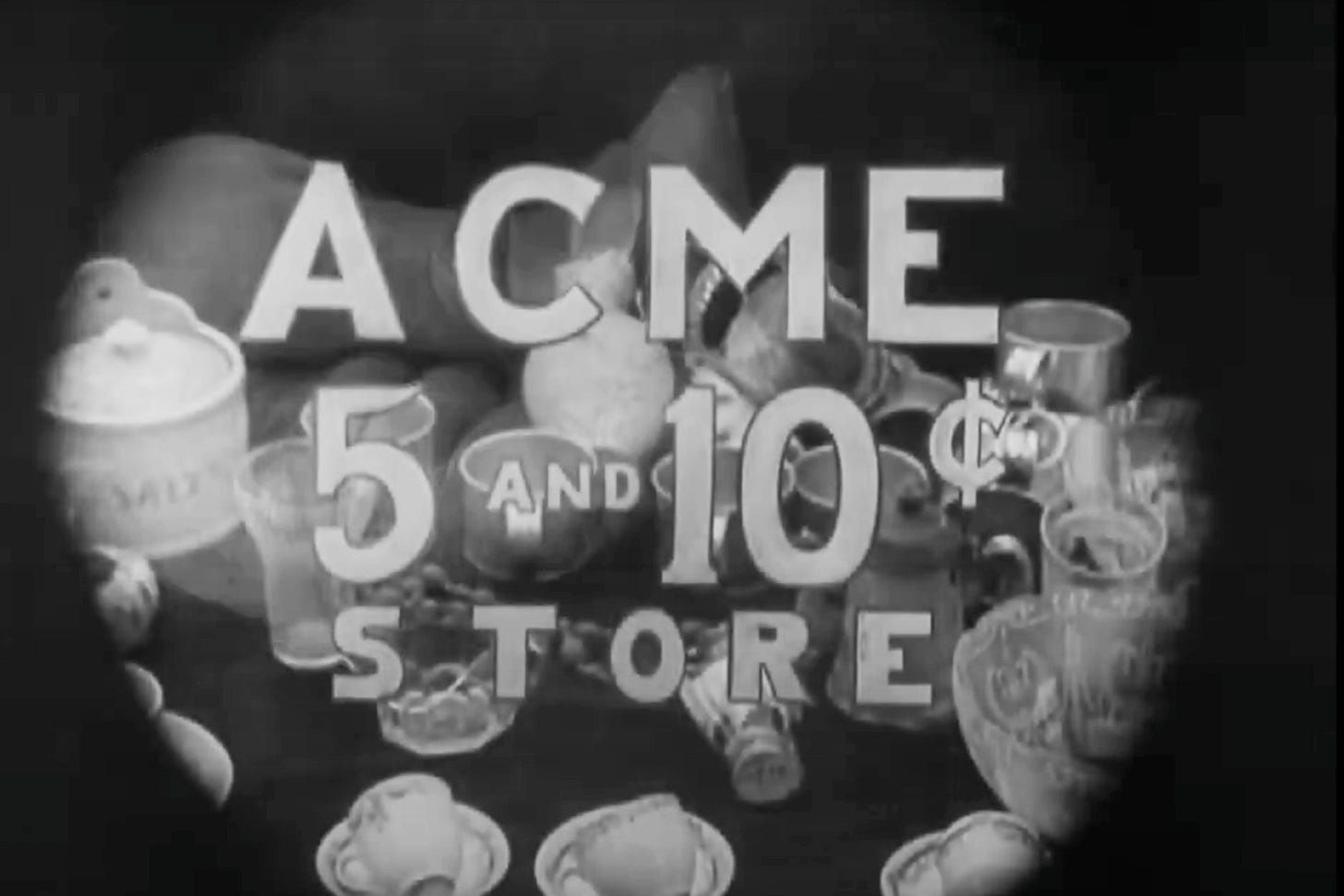ACME
The brand “Acme” has long occupied a quintessential yet somewhat mysterious place in the brandiverse.
Derived from the Greek akmē, it means “the highest point” or “the peak of perfection”. It has been claimed to be an acronym, either for “A Company Making Everything” or “American Companies Make Everything” – but that theory doesn’t really bear scrutiny given that speaking acronyms as words …




